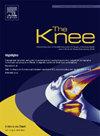Fractures in Oxford unicompartmental knee arthroplasty are associated with medial positioning of the femoral component – A retrospective cohort study
IF 1.6
4区 医学
Q3 ORTHOPEDICS
引用次数: 0
Abstract
a. Purpose
This study aimed to evaluate the relationship between femoral component positioning and the incidence of periprosthetic fractures in Oxford unicompartmental knee arthroplasty (UKA), as well as the effects of component size and preoperative coronal lower limb alignment on fracture risk.
b. Methods
A retrospective single-center study was conducted, including 1,642 cases of medial UKA performed between July 2015 and December 2022. Patients with symptomatic isolated medial knee osteoarthritis meeting specific selection criteria underwent surgery using either press-fit or cemented fixation based on individual bone quality. Radiographic evaluations were performed preoperatively and postoperatively to assess component positioning and alignment. Statistical analyses included the Mann-Whitney U test, Wilcoxon test, and Pearson’s chi-squared test to compare fracture and non-fracture groups.
c. Results
Out of 1,642 cases, 15 (0.9%) experienced a tibial periprosthetic fracture. These fractures were significantly associated with medial positioning of the femoral component and smaller component sizes. The fracture group had a higher mean age (74.3 ± 6.2 years) and a higher percentage of females (80%) compared to the non-fracture group. No significant differences were observed in Body Mass Index (BMI) or preoperative coronal alignment between the groups.
d. Conclusion
Medial positioning of the femoral component and smaller component sizes in Oxford UKA are associated with an increased risk of tibial periprosthetic fractures. Accurate implant positioning is crucial to minimize fracture risk and improve clinical outcomes. These findings underscore the importance of precise surgical techniques and may inform future guidelines for UKA procedures.
Trial registration: This study was retrospectively registered and ethical approval was waived by the local ethical committee (No. 22-0990KB).
牛津单室膝关节置换术中的骨折与股骨成分的内侧定位有关——一项回顾性队列研究
a.目的本研究旨在评估牛津单室膝关节置换术(UKA)中股骨假体定位与假体周围骨折发生率的关系,以及假体大小和术前冠状下肢对齐对骨折风险的影响。方法采用回顾性单中心研究,纳入2015年7月至2022年12月期间进行的1,642例内侧UKA病例。符合特定选择标准的有症状的孤立性膝内侧骨关节炎患者根据个体骨质量采用加压或骨水泥固定进行手术。术前和术后均进行影像学评估,以评估部件的定位和对齐。统计分析包括Mann-Whitney U检验、Wilcoxon检验和Pearson卡方检验来比较骨折组和非骨折组。结果1642例患者中,15例(0.9%)发生胫骨假体周围骨折。这些骨折与股骨假体的内侧定位和较小的假体尺寸显著相关。骨折组平均年龄(74.3±6.2岁)高于非骨折组,女性比例(80%)高于非骨折组。两组间体重指数(BMI)和术前冠状位排列无显著差异。结论牛津UKA股骨假体内侧定位和假体尺寸较小与胫骨假体周围骨折的风险增加有关。准确的植入物定位对于降低骨折风险和改善临床结果至关重要。这些发现强调了精确手术技术的重要性,并可能为未来的UKA手术指导提供信息。试验注册:本研究回顾性注册,当地伦理委员会(No. 22-0990KB)放弃了伦理批准。
本文章由计算机程序翻译,如有差异,请以英文原文为准。
求助全文
约1分钟内获得全文
求助全文
来源期刊

Knee
医学-外科
CiteScore
3.80
自引率
5.30%
发文量
171
审稿时长
6 months
期刊介绍:
The Knee is an international journal publishing studies on the clinical treatment and fundamental biomechanical characteristics of this joint. The aim of the journal is to provide a vehicle relevant to surgeons, biomedical engineers, imaging specialists, materials scientists, rehabilitation personnel and all those with an interest in the knee.
The topics covered include, but are not limited to:
• Anatomy, physiology, morphology and biochemistry;
• Biomechanical studies;
• Advances in the development of prosthetic, orthotic and augmentation devices;
• Imaging and diagnostic techniques;
• Pathology;
• Trauma;
• Surgery;
• Rehabilitation.
 求助内容:
求助内容: 应助结果提醒方式:
应助结果提醒方式:


